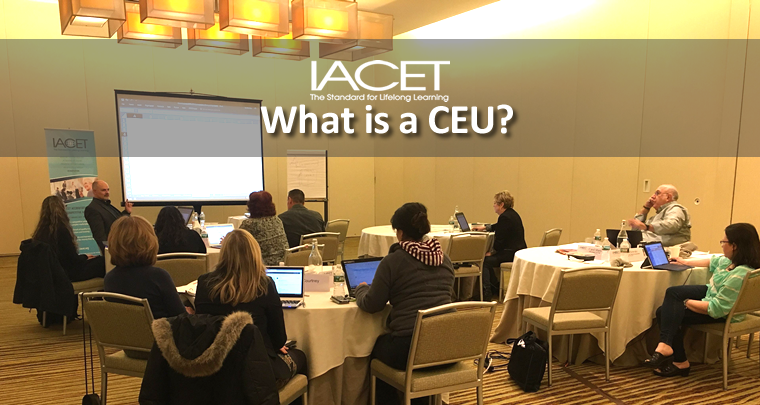What is a CEU?
 For those of you who may wonder what a CEU is and were the term came from this blog post will provide some answers.
For those of you who may wonder what a CEU is and were the term came from this blog post will provide some answers.
What is the CEU and what does it measure?
The CEU is in the public domain. Use of the CEU is voluntary and no permission or approval is required. Any organization can offer the traditional CEU. Unfortunately, there are organizations which award the CEU which do not adhere to the standard developed by IACET. This has led to consumer misunderstanding and distrust of the value of the CEU; therefore IACET has taken steps to ensure the credibility of the IACET CEU.
One IACET Continuing Education Unit (CEU) is defined as 10 contact hours of participation in an organized continuing education experience under responsible sponsorship, capable direction, and qualified instruction.
What is the purpose of the IACET CEU?
The primary purpose of the CEU is to provide a permanent record of the educational accomplishments of an individual who has completed one or more significant non-credit educational experiences. Awarding the IACET CEU also provides a quality indicator for your continuing education and training programs because it means that you have been reviewed and approved as complying with the internationally recognized standard.
How does the CEU compare to college credit?
CEUs are different from college credits and were originally designed for professionals who had already attained a certain level of education and needed to take a certain amount of continuing education and training per year to renew their license or certification—such as engineers, nurses and other health-care-related professionals, teachers, early childhood educators, human resource professionals, etc. Most colleges will not directly accept CEUs for college or graduate credit. However, some colleges and universities will look at an individual’s portfolio that includes work experience and continuing education and training offerings (measured by CEUs). The Council on Adult and Experiential Learning helps universities set up programs to turn work experience and continuing education and training activities into college credits, and it may have a list of institutions that have such programs. Also, the American College Advisory Service helps individuals turn CEUs into undergraduate and graduate credit for a fee.
How did IACET become the standard bearer and the caretaker of the CEU?
IACET grew out of a National Task Force on continuing education commissioned by the U. S. Bureau of Education (now the Department of Education) in 1968. The Task Force included leaders in continuing education, such as the American Medical Association and American Nursing Association. The Task Force developed the Continuing Education Unit (CEU) and determined universal guidelines for continuing education and training. IACET (originally the Council on the Continuing Education Unit) was created by the task force to provide both a forum for discussion of education standards and an organizational body to promote quality standards. IACET’s guidelines which are now the ANSI/IACET Standard is based upon in-depth research on the learning process.
IACET is the premier standard setting organization accredited by the American National Standards Institute (ANSI) for continuing education and training. Our ANSI/IACET Standard shapes the criteria organizations use to develop and implement high quality Continuing Education and Training (CE/T) programs.
For more information on the IACET CEU, go to http://www.iacet.org/ceus/about-the-ceu.


